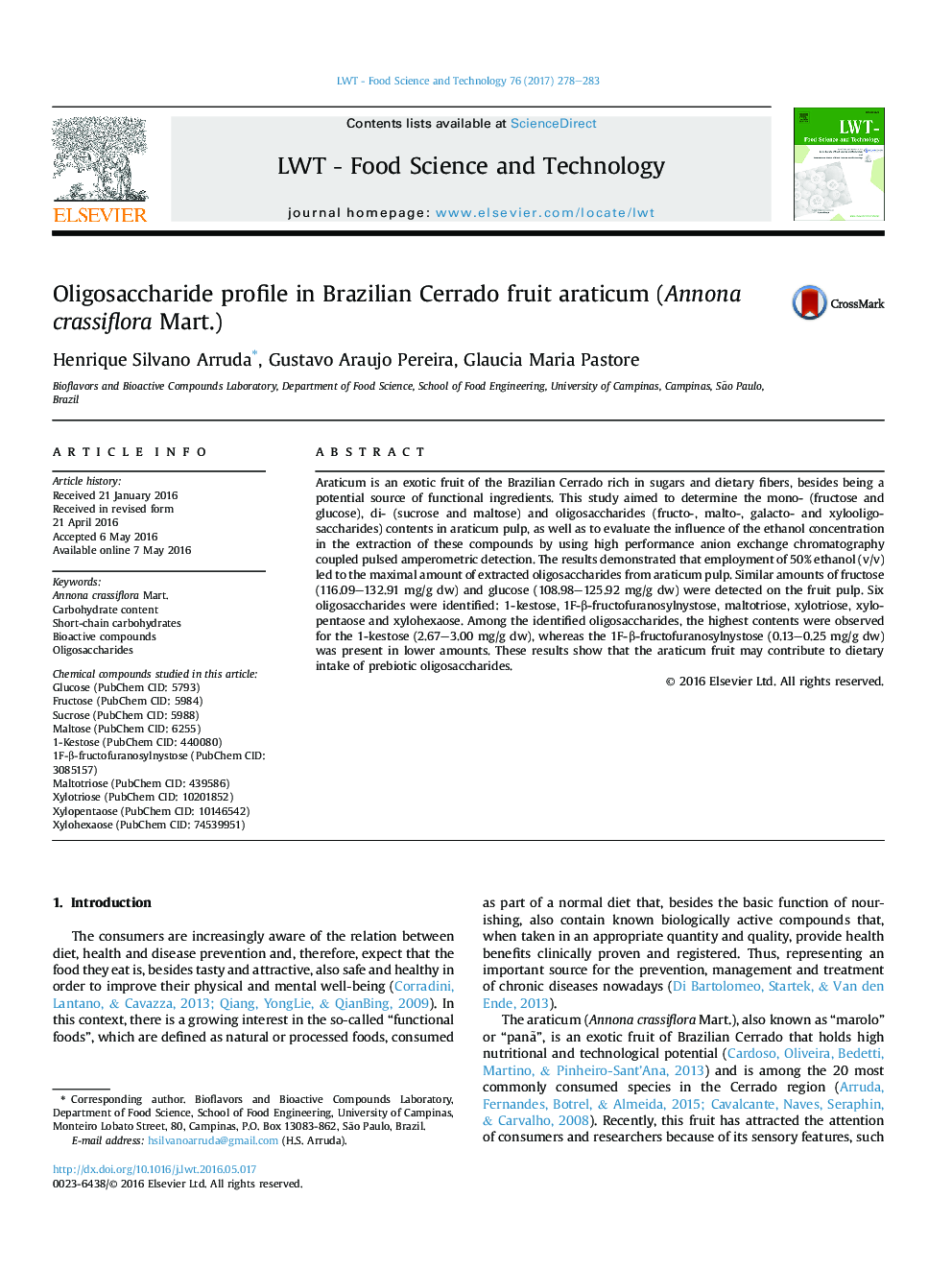| Article ID | Journal | Published Year | Pages | File Type |
|---|---|---|---|---|
| 5769120 | LWT - Food Science and Technology | 2017 | 6 Pages |
â¢Sugars and oligosaccharides in araticum pulp were reported first time.â¢Fructose and glucose were found in similar quantities.â¢Six oligosaccharides were identified in araticum pulp.â¢1-kestose was the higher oligosaccharide found, followed by xylohexaose.â¢Araticum fruit may contribute to dietary intake of prebiotic oligosaccharides.
Araticum is an exotic fruit of the Brazilian Cerrado rich in sugars and dietary fibers, besides being a potential source of functional ingredients. This study aimed to determine the mono- (fructose and glucose), di- (sucrose and maltose) and oligosaccharides (fructo-, malto-, galacto- and xylooligosaccharides) contents in araticum pulp, as well as to evaluate the influence of the ethanol concentration in the extraction of these compounds by using high performance anion exchange chromatography coupled pulsed amperometric detection. The results demonstrated that employment of 50% ethanol (v/v) led to the maximal amount of extracted oligosaccharides from araticum pulp. Similar amounts of fructose (116.09-132.91 mg/g dw) and glucose (108.98-125.92 mg/g dw) were detected on the fruit pulp. Six oligosaccharides were identified: 1-kestose, 1F-β-fructofuranosylnystose, maltotriose, xylotriose, xylopentaose and xylohexaose. Among the identified oligosaccharides, the highest contents were observed for the 1-kestose (2.67-3.00 mg/g dw), whereas the 1F-β-fructofuranosylnystose (0.13-0.25 mg/g dw) was present in lower amounts. These results show that the araticum fruit may contribute to dietary intake of prebiotic oligosaccharides.
